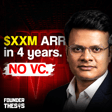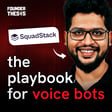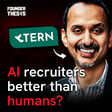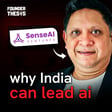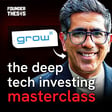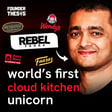
India’s IT Infra Leap: Data Centers, Cloud, AI & What’s Next | A S Rajgopal (NxtGen)
"Each rack can deliver 2 crores of revenue versus 6 lakh rupees from data centers."
This striking comparison from A.S. Rajgopal reveals why cloud services generate 10x more revenue per rack than traditional data center hosting - a fundamental shift that's reshaping India's digital infrastructure landscape.
A.S. Rajgopal is the Managing Director & CEO of NxtGen Cloud Technologies, one of India's leading sovereign cloud providers. With nearly 30 years of corporate experience at Dell, Microsoft, and Reliance Communications, he built and led Reliance's enterprise division to over ₹1000 crores in revenue. Since founding NxtGen in 2012, he has grown it to serve 1000+ organizations with a 44% EBITDA margin and 24% year-on-year growth from existing customers alone. An alumnus of Kellogg and Yale executive programs, Rajgopal is now raising $400 million to build India's largest AI GPU infrastructure, positioning NxtGen at the forefront of India's digital sovereignty movement.
Key Insights from the Conversation:
👉Data Sovereignty: Indian enterprises are shifting from cost-focused to compliance-focused cloud adoption due to data localization requirements and foreign jurisdiction risks
👉Infrastructure Evolution: AI workloads require 10x more power density (100-600 kilowatts per rack) compared to traditional servers, demanding complete data center redesign
👉Business Model Transformation: Cloud services generate 10x revenue per rack compared to traditional data center hosting while requiring higher but more profitable investments
👉Open Source Strategy: Leveraging Red Hat OpenStack/OpenShift reduces customer costs by 10x compared to proprietary platforms while maintaining enterprise-grade capabilities
👉India AI Opportunity: The government's ₹10,000 crore AI initiative creates a ₹20,000 crore market opportunity for sovereign GPU cloud providers
#DataCenter #CloudComputing #AIInfrastructure #DigitalIndia #Entrepreneurship #TechFounder #SovereignCloud #GPUCloud #IndiaAI #Datacenter #CloudServices #TechEntrepreneur #DigitalTransformation #AIRevolution #TechInfrastructure #IndianStartups #EnterpriseCloud #TechLeadership #FounderStory #CloudStrategy #AIComputing #TechInnovation #DigitalSovereignty #CloudInfrastructure #TechPodcast

